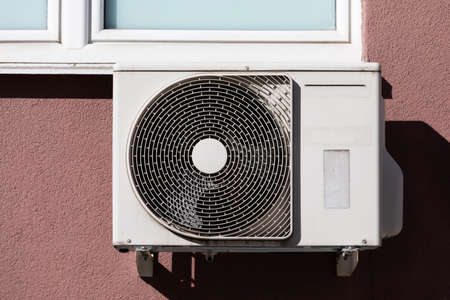Introduction to Home Plumbing
When it comes to maintaining a comfortable and functional home in the United States, understanding your residential plumbing system is essential. Plumbing is one of the most critical components in any house, providing access to clean water for drinking, cooking, cleaning, and ensuring safe waste disposal. Even though much of the plumbing is hidden behind walls and under floors, its daily role is vital for health, hygiene, and convenience. In this beginner’s guide, we’ll give you an overview of how typical American home plumbing systems work and why they matter so much in everyday life.
The Role of Plumbing in American Homes
American homes rely on complex networks of pipes, fixtures, and appliances that bring fresh water in and remove wastewater efficiently. Whether you live in a single-family house or an apartment, your plumbing system supports many daily activities that might be easy to overlook until something goes wrong. Without proper plumbing, modern conveniences like hot showers, dishwashers, and washing machines would not be possible.
Basic Components of a Home Plumbing System
| Component | Purpose |
|---|---|
| Water Supply Lines | Deliver clean water from the main source into the home |
| Fixtures (sinks, toilets, showers) | Provide access points for using water throughout the house |
| Drainage Pipes | Carry used water and waste away from the home |
| Vent Pipes | Allow air flow to ensure smooth drainage and prevent sewer gases from entering the home |
| Traps | Create a barrier to block odors and sewer gases from backing up into living spaces |
Why Understanding Your Plumbing Matters
A basic knowledge of your home’s plumbing system helps you identify issues early, communicate effectively with plumbers, and even tackle minor repairs yourself. This awareness can save money on costly repairs and protect your property from water damage. By grasping the essentials laid out in this guide, you’ll feel more confident managing one of your home’s most important systems.
Key Components of a Plumbing System
Understanding the fundamental components of your home’s plumbing system is crucial for effective maintenance and troubleshooting. Most American homes share several essential elements in their plumbing infrastructure, each playing a specific role in delivering clean water and disposing of wastewater efficiently. Here’s a breakdown of the key components commonly found in residential plumbing systems:
| Component | Description | Common Materials |
|---|---|---|
| Supply Lines | These pipes bring fresh, potable water from the municipal supply or a private well into your home. They are pressurized to ensure water reaches every fixture efficiently. | Copper, PEX, CPVC |
| Drainpipes | Also known as drain-waste-vent (DWV) pipes, these carry used water and waste away from sinks, toilets, tubs, and appliances to the main sewer line or septic system. | PVC, ABS, Cast Iron |
| Fixtures | The visible end points where you use water in your daily life—such as faucets, showers, toilets, bathtubs, and dishwashers. Fixtures are connected to both supply lines and drainpipes. | Varies (ceramic, stainless steel, plastic) |
| Valves | Control the flow of water throughout your system. Common types include shut-off valves under sinks and behind toilets, as well as the main shut-off valve controlling all water entering the house. | Brass, PVC, Stainless Steel |
Main Shut-Off Valve
This is perhaps the most important control in your plumbing system. Located where the main supply line enters your home—often in the basement or near an exterior wall—the main shut-off valve allows you to stop all water flow during emergencies or repairs.
Branch Lines & Individual Shut-Offs
Branch lines distribute water to different areas of your house. Each major appliance or fixture typically has its own localized shut-off valve for convenient repairs without affecting the entire home’s water supply.
Vents and Traps
Your drainpipes are equipped with traps (U-shaped bends) that prevent sewer gases from entering your living spaces. Vent pipes allow air into the plumbing system to maintain proper drainage and prevent suction that could empty these traps.
Together, these components create a reliable network that provides safe drinking water and efficient waste removal—a hallmark of modern American homes. Understanding their roles helps homeowners perform basic maintenance and communicate more effectively with professional plumbers when issues arise.

3. How Water Gets In and Out
Understanding how water enters and exits your home is essential to mastering the basics of your plumbing system. In most American homes, water is delivered by either a municipal water supply or a private well. After entering your house through the main water line, it gets distributed to various fixtures like faucets, showers, toilets, and appliances.
How Water Enters Your Home
Your main water supply line typically connects to a meter that tracks usage for billing purposes. From there, water flows through pipes—usually made of copper, PEX, or PVC—into your homes plumbing network. A shut-off valve is usually located near where the water line enters the house, allowing you to stop the flow in case of emergencies or repairs.
Water Distribution Within the House
Once inside, water is routed through a series of cold and hot water lines. The cold line supplies unheated water directly to fixtures and to your water heater. The heater then sends hot water to other parts of your house as needed. Below is a basic overview:
| Fixture/Appliance | Cold Water Line | Hot Water Line |
|---|---|---|
| Kitchen Faucet | Yes | Yes |
| Shower/Bathtub | Yes | Yes |
| Laundry Washer | Yes | Yes |
| Toilet | Yes | No |
| Dishwasher | No (typically) | Yes |
How Wastewater Exits Your Home
After you use water, it becomes wastewater that needs to be safely carried away. This happens through a network of drainpipes connected to every sink, tub, toilet, and appliance. Gravity helps move wastewater downward through larger pipes toward either a municipal sewer system or a private septic tank. Proper venting ensures smooth drainage and prevents sewer gases from entering your living space.
Main Takeaways:
- The main water supply brings in clean water for daily use.
- Pipes distribute cold and hot water throughout the home.
- A separate drainage system removes wastewater efficiently.
- Sewer lines connect to city systems or septic tanks based on location.
This foundational knowledge will help you understand what’s happening behind your walls and under your floors, empowering you to recognize problems early and maintain your homes plumbing system more effectively.
4. Common Plumbing Materials and Tools
Understanding the materials and tools used in your home’s plumbing system is essential for basic repairs or upgrades. In the United States, there are several standard plumbing materials you’re likely to encounter, as well as a set of fundamental tools every homeowner should be familiar with. Here’s a brief overview:
Popular Plumbing Materials
| Material | Description | Common Uses | Pros | Cons |
|---|---|---|---|---|
| PVC (Polyvinyl Chloride) | A white or cream-colored plastic pipe. | Drain lines, vent pipes, irrigation systems. | Lightweight, inexpensive, easy to cut and join. | Not suitable for hot water lines; can become brittle over time. |
| Copper | A durable metal pipe, usually reddish-brown. | Water supply lines, sometimes refrigerant lines in HVAC systems. | Long-lasting, resists corrosion, handles heat well. | More expensive; requires soldering for joints. |
| PEX (Cross-linked Polyethylene) | A flexible, usually blue or red plastic tubing. | Hot and cold water supply lines. | Easy to install, flexible for tight spaces, resistant to scale and chlorine. | Sensitive to UV light; may require special fittings and tools. |
Basic Plumbing Tools Homeowners May Need
- Pipe Wrench: Essential for gripping and turning pipes and fittings—especially metal ones.
- Adjustable Wrench: Versatile tool for tightening or loosening nuts and bolts.
- Plunger: A must-have for clearing clogged toilets or drains quickly.
- Pliers (Channel-Lock): Useful for gripping irregularly shaped objects or adjusting fittings in tight spaces.
- Teflon Tape (Plumber’s Tape): Used to seal threaded pipe joints and prevent leaks.
- Pipe Cutter or Tubing Cutter: For cutting copper or plastic pipes cleanly and accurately.
- Basin Wrench: Specially designed to reach nuts under sinks and faucets where space is limited.
The Importance of Choosing the Right Materials and Tools
Selecting the appropriate plumbing materials ensures longevity and safety in your home’s water system. Likewise, having the right tools on hand can make small repairs manageable and help you avoid unnecessary expenses from hiring a professional for minor issues. As you familiarize yourself with these basics, you’ll be better prepared for routine maintenance or emergencies in your own home’s plumbing system.
5. Basic Maintenance Tips
Taking a proactive approach to plumbing maintenance can save American homeowners from costly repairs and unexpected headaches. Here are some simple preventive measures and routine checks you can perform to help keep your home’s plumbing system in top shape:
Routine Preventive Measures
- Check for leaks regularly: Inspect faucets, showerheads, under sinks, and around toilets for any signs of leaks or drips.
- Avoid chemical drain cleaners: Use natural solutions like baking soda and vinegar or a drain snake to clear minor clogs instead of harsh chemicals that can damage pipes.
- Clean drain stoppers: Remove and clean sink and tub stoppers monthly to prevent buildup of hair and debris.
- Monitor water pressure: High water pressure can strain your plumbing. Consider installing a pressure regulator if you notice consistently high pressure.
Essential Routine Checks
| Task | Frequency | What to Look For |
|---|---|---|
| Inspect exposed pipes | Twice a year | Signs of corrosion, moisture, or leaks |
| Flush water heater | Once a year | Sediment buildup at the bottom of the tank |
| Test sump pump | Before rainy season | Proper operation by pouring water into pit |
Helpful Tips for Everyday Use
- Avoid flushing anything besides toilet paper down the toilet—wipes, feminine products, and paper towels can cause serious clogs.
- Use mesh screens over drains in tubs and sinks to catch hair and larger debris.
When to Call a Professional
If you notice persistent clogs, frequent leaks, or low water pressure that doesn’t resolve with basic steps, it may be time to call a licensed plumber. Regular DIY maintenance goes a long way, but knowing your limits helps protect your home from bigger plumbing problems down the line.
6. When to Call a Professional Plumber
Understanding your home’s plumbing system means knowing when you can handle an issue yourself and when it’s time to bring in the experts. Some minor clogs or drippy faucets can often be DIY projects, but there are clear signs that indicate you need the skills and tools of a licensed plumber.
Recognizing Plumbing Problems That Require Expert Help
| Problem | Description | Why Call a Pro? |
|---|---|---|
| Burst Pipes | Sudden water gushing, wet spots on walls or ceilings, or rapid drops in water pressure. | Burst pipes can cause major water damage and require immediate expert repair. |
| Sewage Backups | Foul odors, water backing up from drains or toilets, slow drainage in multiple fixtures. | Sewage issues pose serious health risks and often need specialized equipment to fix. |
| No Hot Water | Water heater not functioning, strange noises, leaks near the tank. | Water heater repairs can be dangerous without proper training and may violate local codes if done incorrectly. |
| Low Water Pressure | Persistent weak flow throughout the house despite cleaning aerators or showerheads. | This may indicate hidden leaks or pipe corrosion that require professional diagnosis and repair. |
Choosing a Licensed US Plumber
When hiring a plumber in the United States, make sure they are licensed and insured as required by your state. Here are some tips for finding the right professional:
- Check Credentials: Ask for their plumbing license number and verify it with your state’s licensing board website.
- Read Reviews: Look up reviews on platforms like Yelp, Google, or the Better Business Bureau to see what previous customers have experienced.
- Get Multiple Quotes: Request estimates from at least three plumbers to compare pricing and services offered.
- Ask About Warranties: Reputable plumbers stand behind their work with warranties on parts and labor.
Questions to Ask Before Hiring
- Are you licensed, bonded, and insured?
- How much experience do you have with this type of repair?
- Can you provide references from recent jobs?
The Bottom Line
If you encounter plumbing problems beyond basic maintenance—especially those involving potential water damage, sewage issues, or gas lines—don’t hesitate to call a professional. Hiring a licensed plumber protects your home, your wallet, and your peace of mind.


